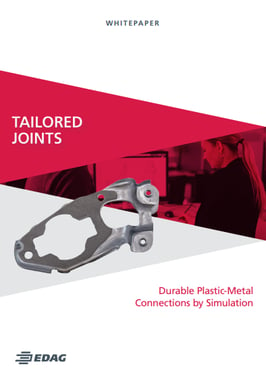Efficient production of hybrid components calls for true-to-life models 
What surface properties must the metal have for the plastic to adhere reliably during direct thermal joining? What forces can the connection withstand and what factors affect its load-bearing capacity? The answers to these questions are vital for anyone wishing to develop hybrid components using simulation methods for the direct hybrid joining of metal and plastic elements rather than time-consuming trial-and-error procedures to find out whether the component will meet expectations when put to practical use.
True-to-life models could provide answers and serve as the basis for simulations in which the load limits are determined and the component design is systematically optimized to meet load path requirements. But is it really possible to create reliable models for hybrid components requiring no additional joining materials such as bolts, rivets or adhesives? This problem was the focus of the "Tailored Joints" research project in which EDAG Engineering collaborated with numerous partners from research and industry.
The project provided promising insights into the modeling of thermally directly joined plastic-metal connections with laser-structured metal surfaces. Despite a number of initial deviations between simulations and test trials, it still proved possible to explain the differences and in this way optimize the models. Details can be found in our white paper "Durable Plastic-Metal Connections by Simulation", which can be downloaded here.
Download White paper now
** EDAG Group: EDAG Engineering Group AG, EDAG Engineering GmbH, EDAG Production Solutions GmbH & Co. KG, EDAG aeromotive GmbH